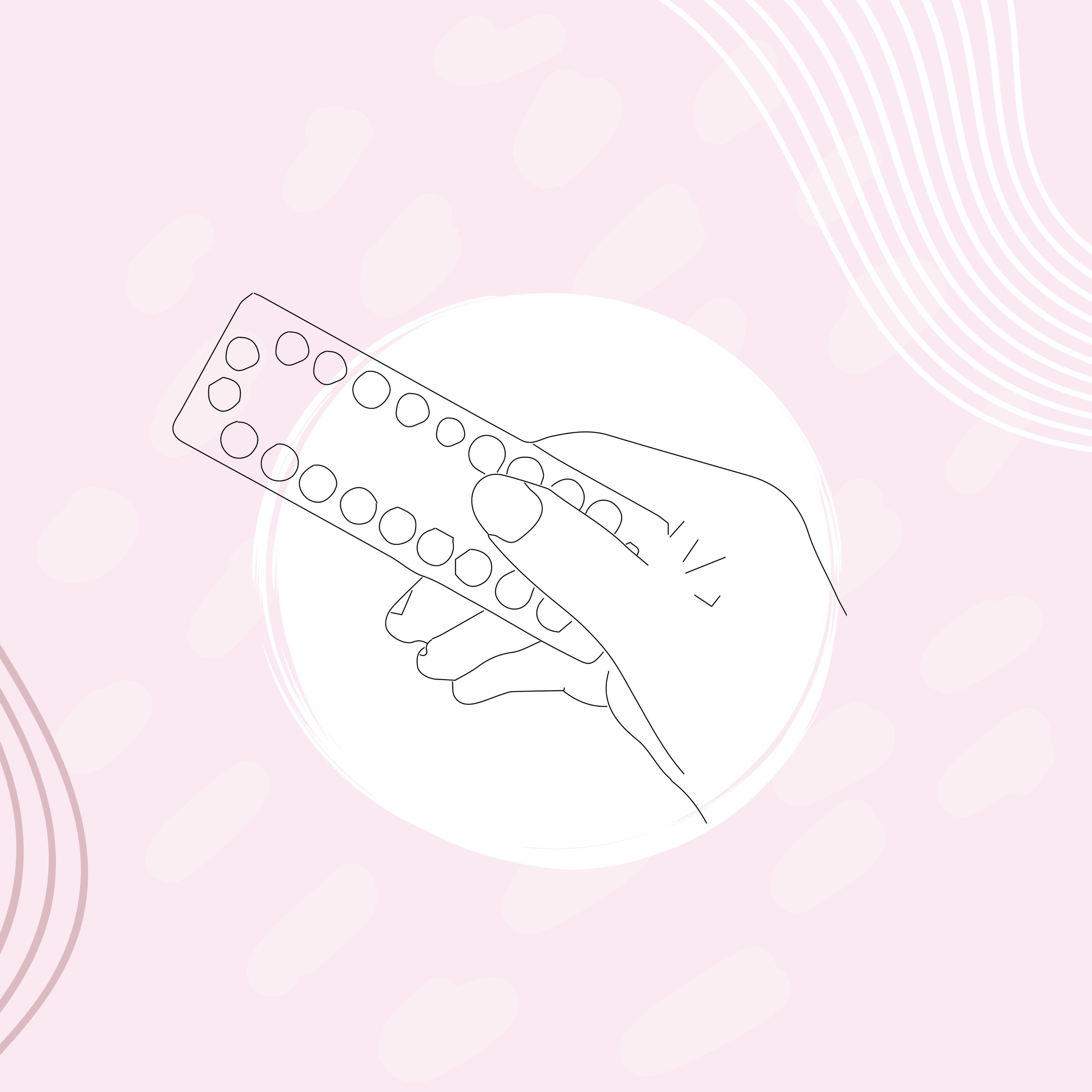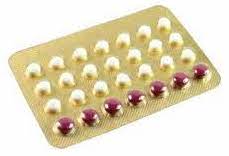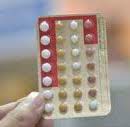
The combined oral contraceptive Pill (COCP) is the most commonly–used contraceptive method in Australia: up to 80% of women use it at some stage in their reproductive lives. The mean age of first sexual intercourse among Australia women is 16 years old; many women use contraceptives for three or more decades. The Pill is less invasive than implants (that are inserted under your skin) or intra-uterine devices, making it an attractive option for many women.
However, many clinicians don’t have the time to explain to patients how The Pill actually works! And with over 30 different brands on the market, it can be confusing (even for doctors!) to work out which Pill will be best for a particular patient.
Over the coming weeks, we provide a series of four blog posts outlining answers to the following questions about The Pill:
- How does The Pill stop pregnancy?
- What hormones are in The Pill, and how do they work?
- How effective is it at stopping pregnancy?
- What other benefits does The Pill provide?
- What are common side-effects of The Pill, and how can they be managed?
- What are the rare but serious adverse events (or complications) related to taking The Pill?
plus one final blog purely on frequently asked questions about The Pill!
So come along for the ride, and delve deeper into the history, make-up, pros, and cons of this evolutionary little tablet: the oral contraceptive Pill!
The history of ‘The Pill’ in Australia
The contraceptive pill was first introduced to Australia in the early 1960s, making Australia only the second country in the world to have access to it’. Its introduction brought about a revolution in women’s rights and health. Initially, doctors were only allowed to prescribe The Pill to married women, and a sky-high 27% tax was applied. Thankfully, both of these onerous conditions were revoked in the 1970s.
Considerable changes have been made to The Pill’s composition since it was introduced. Significant improvements made over the decades, include:
- Widening of the range of both oestrogen and progesterone hormones available to be used in a pill
- Different permutations, combinations and doses of oestrogen and progesterone hormones
- Reductions to the dose of hormones in each pill, to decrease side-effects and adverse events
- More research regarding the non-contraceptive benefits of The Pill (which was be outlined in our next blog)
However, with over 30 different brands available, it can sometimes be challenging to work out which Pill is the best option for you. Read on, for some general guidance regarding the pros and cons of different Pills available on the market today.
‘The Pill’, and how it prevents pregnancy
A woman can get pregnant if sperm reaches one of her eggs. Broadly speaking, contraception tries to stop this from happening, by: keeping the egg and sperm apart (eg. condoms); stopping egg production (eg. the combined oral contraceptive pill); and / or thinning the lining of the uterus (eg. Mirena progesterone-only intrauterine device). Contraceptive options can be grouped into either hormonal or non-hormonal (e.g. copper intrauterine device, getting ‘your tubes tied’, condoms). Progestins and oestrogens are so-called steroid lipid hormones: ‘hormonal contraception’ contains a member of the progestin family, with / without a member of the oestrogen family. Ingredients in hormonal contraception work separately, and also synergistically, to prevent pregnancy.
Progestins
Members of the progestin family of hormones help to prevent pregnancy using several different mechanisms:
- Thickening cervical mucous, which makes it harder for sperm to reach an egg
- Thin the lining of the uterus (called the ‘endometrium’), making it harder for any developing embryo to implant and grow into a baby
- May prevent ovulation (but only in about 50% of menstrual cycles)
Progestins may also decrease pregnancy by slowing the travelator action of microscopic hairs inside the Fallopian tubes (that help egg and sperm to meet).
Oestrogens
Members of the oestrogen family of hormones largely prevent pregnancy by preventing ovulation (the production of an egg by an ovary).
The combined oral contraceptive Pill (COCP)
The combined oral contraceptive Pill contains a combination of a member of both the progestin family of hormones, and the oestrogen family of hormones. Therefore, the combined Pill prevents pregnancy by a combination of the above mechanisms, ie it:
- Prevents ovulation
- Thickens cervical mucous
- And also thins the lining of the uterus
These changes make it harder for the sperm to reach an egg, and for a fertilised egg to become attached to the uterine lining and develop into an embryo.
The (slightly!) different hormones in different types of contraceptive pills
In Australia, there are eight different progestin ingredients in different combined Pills, and four possible oestrogen ingredients. These twelve ingredients are combined in different permutations, combinations, and doses to produce more than 30 different brands of contraceptive Pill, as can be seen in the table below. In the table below: the far left column displays the brand name; the second column lists the type and amount of oestrogen hormone in that pill; and the third column the progestin hormone.
These different options have been introduced in efforts to: improve contraceptive efficacy; reduce side-effects; reduce risks; and improve non-contraceptive benefits. Your doctor may suggest one Pill over another, based on the hormonal ingredients contained therein.
On a basic level, oestrogen hormone builds up the thickness of your uterine lining (or ‘endometrium’), while progesterone hormone maintains it.
The different oestrogen ingredients in The Pill
As can be seen in the table above, there are four different oestrogen ingredients in contraceptive Pills available in Australia: ethinyloestradiol; mestranol; oestradiol valerate; and oestradiol.
The first generation of Pills contained mestranol, which has been largely replaced by ethinyloestradiol (EE). In the 1960s and 1970s, the EE dose per pill was as high as 150 micrograms per pill: this has slowly decreased over time. Amongst the EE-containing pills available on the Australia market today, the dose ranges from 20 to 50 micrograms of EE per pill. Of note, the lower-EE-dose options are just as effective at preventing pregnancy as the higher-EE-dose pills.
The different progestin ingredients in The Pill
As can be seen in the table above, there are eight different progestin ingredients in contraceptive Pills available in Australia: levonorgestrel; norethisterone; desogestrel; gestogene; cyproterone acetate; drosperinone; dienogest; and nomegestrol acetate.
Classically, gynaecologists talk about ‘generations’ of progestins, as they were developed and used in various contraceptive Pills over time. For example:
- First generation progestins: norethindrone; norethynodrel; ethnodiol. These progestins were primarily designed for use in contraceptive pills. They have a lower potency and wear off more quickly, which can lead to breakthrough bleeding.
- Second generation progestins: levonorgestrel; norgestrel; norethisterone. May have so-called androgenic side-effects (eg. acne, oily skin, excess hair)
- Third generation progestins: gestodene; desogestrel; norgestimate. May be less likely to cause androgenic side-effects
- Four generation progestins: dienogest; drospirenone. May be less likely to cause androgenic side-effects
Of note: some clinicians argue that the above classification system is not particularly useful clinically, and should be abandoned.
While newer (third and fourth generation) progestins were designed to reduce the side-effects of older generations, there is no strong evidence to recommend one progestin over another.
Progesterone-only pills (POPs)
While combined oral contraceptive pills contain a combination of both oestrogen and progesterone hormones, there are also several progesterone-only pills on the market, which do not contain any oestrogen. Instead, they only contain a progestin: ‘Microlut’ contains levonorgestrel; ‘Noriday’ norethisterone, and ‘Slinda’ drosperinone.
Because POPs do not contain any oestrogen, they are safe for women who cannot safely take oestrogen hormones: eg. women at high risk of venous thromboembolism (a blood clot in the legs and / or lungs). POPs are as effective at combined Pills in terms of preventing pregnancy. One drawback is that unpredictable vaginal bleeding is more common; another is that the POP must be taken at a similar time each day (within 21 – 27 hours of the last dose).
Monophasic versus phasic pills
Most contraceptive pills in Australia are presented in 28-day blister sheets, which each hold 21 active (hormonal) and 7 inactive (or ‘sugar’) pills, to mimic the natural menstrual cycle. When you stop taking the active (hormonal) tablets, and change to the inactive (‘sugar’) tablets, the reduction in progesterone hormone leads to a so-called ‘progesterone-withdrawal bleed’: a period. That’s why women taking The Pill tend to have their period when they take the sugar pills.
Some formulations contain 24 active and 4 sugar pills (so-called “24 / 4” regimes) which may reduce the chance of so-called ‘breakthrough’ ovulation and unplanned pregnancy.
Some Pill formulations contain a higher ratio of hormonal to sugar pills: for example, 84 consecutive hormonal tablets, followed by 7 ‘sugar’ pills. In this scenario, you would only get your period once every three months. Other brands contain no sugar tablets at all, which means you won’t ever have a full period; you may still experience some light spotting.
The pills within the 21 (or 24) active pills may contain exactly the same hormonal ingredients (so-called ‘monophasic pills). Alternatively, the active pills may contain two, three or even four different combinations and doses of hormones: so-called bi-, tri-, or quadri-phasic pills.
 Monophasic pills have the same amount of estrogen and progestin in each tablet. For multiphasic pills, the ratio of hormones in the active tablets varies throughout the cycle. ‘Biphasic’ pills have 2 different hormonal tablets in the active pills; triphasic pills have 3, and quadri-phasic four. (You can usually tell the difference based on the colour of the tablets: monophasic active tablets are generally all the same colour, while the multiphasic pills differ in colour based on their hormonal ingredients.)
Monophasic pills have the same amount of estrogen and progestin in each tablet. For multiphasic pills, the ratio of hormones in the active tablets varies throughout the cycle. ‘Biphasic’ pills have 2 different hormonal tablets in the active pills; triphasic pills have 3, and quadri-phasic four. (You can usually tell the difference based on the colour of the tablets: monophasic active tablets are generally all the same colour, while the multiphasic pills differ in colour based on their hormonal ingredients.)

Multi-phasic pills do not have any evidence-based advantage over monophasic pills, in relation to their contraceptive effectiveness or side-effect profile. Hence, some researchers argue that there is little reason to recommend a multiphasic pill over a more straightforward monophasic option.
Conclusion
Hopefully this post has deepened your understanding of The Pill’s history, its hormonal make up, and how it works. Over the coming weeks, we will continue this series of blog posts, and will cover: the many benefits of The Pill; some of the possible side-effects and adverse events; and commonly asked questions!
